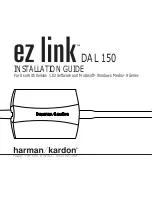
90
5.10
GGC
All video assists capture the image they see on the ground glass of the film
camera; this ensures that framing and the impression of depth of field are
identical between the film and the video assist image. The ground glass is
an integral part of the optical viewfinder, a feature of 35 mm film cameras
much loved by camera operators. Unfortunately, the ground glass also
creates a visible texture on traditional video assists. By recording one or
three
so called calibration images of neutral white whenever a new ground
glass is placed into the camera or an extreme wide angle camera lens is
used, the precise ground glass texture is set for the HD-IVS, which then
can use its powerful image processor to remove it from the images. This
Ground Glass Cancellation (GGC) technology delivers clean and sharp
preview images without any distracting texture.
The visibility of the ground glass texture depends on the f-stop of the film
camera lens. It is more visible if the camera lens is stopped down. To get
the best possible cancellation of the texture, it is necessary to record a
series of three calibration images at different f-stops and to apply one of
the three calibration images depending on the actually used f-stop. This is
called advanced mode. As the recording of the three calibration images in
the advanced mode does take some time, there is also a so called basic
mode, where only one calibration image is necessary.
For more details on basic and advanced mode see chapter
5.10.3 GGC
Mode. Please see also the camera manuals for details on the Lens Data
System and the Lens Control System.
Regardless if one or three calibration images are recorded, it is necessary
to have a completely white object in front of the film camera which is
Summary of Contents for K2.47050.0
Page 3: ...3 1 Quick Reference ...
Page 4: ...4 MENU EDIT TEXT ...
















































